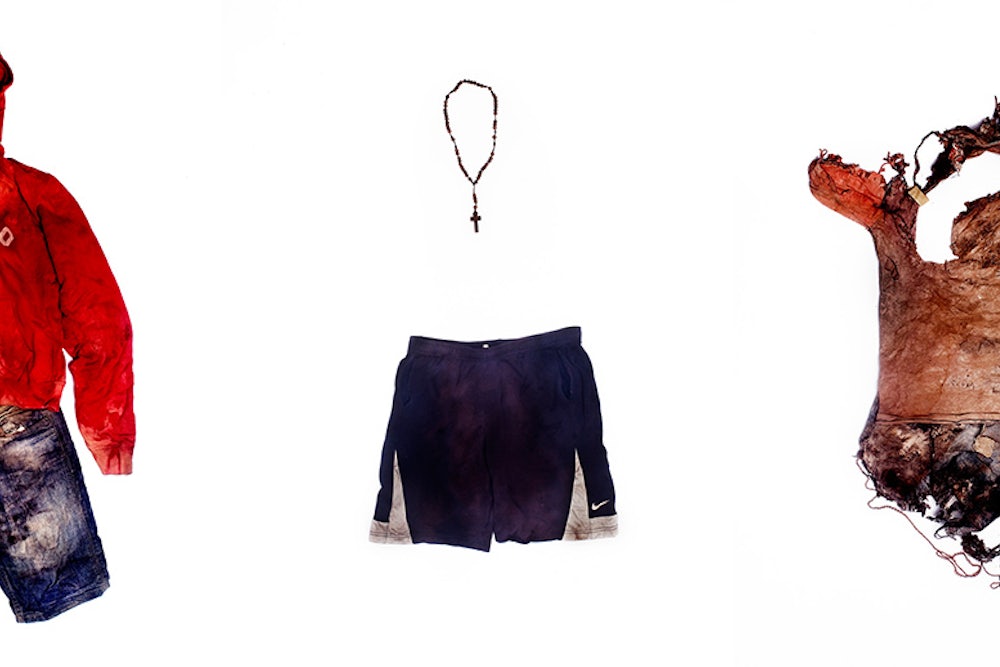Gang violence is rife in El Salvador, which has one of the highest murder rates in the world. According to Salvadoran photographer Fred Ramos, about 1,500 people have been reported missing in the last year alone.
This was the impetus for Ramos’s harrowing series “The Last Outfit of the Missing,” which displays clothes that have been dug up from anonymous graves, on a white background. Often this clothing is the last trace or clue as to who these desaparecidos may have been. “I was documenting the work of forensic anthropologists from the Institute of Legal Medicine, and I realized how important the clothes of the exhumed were to them. … They hope that through those clothes the families can recognize their missing relatives,” Ramos told me.
Despite the fact that over the past several years thousands of people have been “disappeared,” the state has no official policy or protocol on how to handle these situations. Families often begin the search on their own. Indeed, because of conflicts between the Supreme Court and the Legislative Assembly, even attempts to establish a protocol—a DNA bank that contains samples of bones that could be matched against the DNA of families searching for missing relatives, for instance—have been postponed.
Ramos hopes that one of the outfits featured in this series, originally published in the Salvadoran newspaper El Faro will be claimed by a missing person’s family. “I thought the power that each one of these outfits had to tell the stories of the disappeared was great, and moreover, it gave a human element to a problem that had only been told through figures."
“El Último Atuendo de los Desaparecidos” won first prize in the “Daily Life” category at the 2014 World Press Photo.








